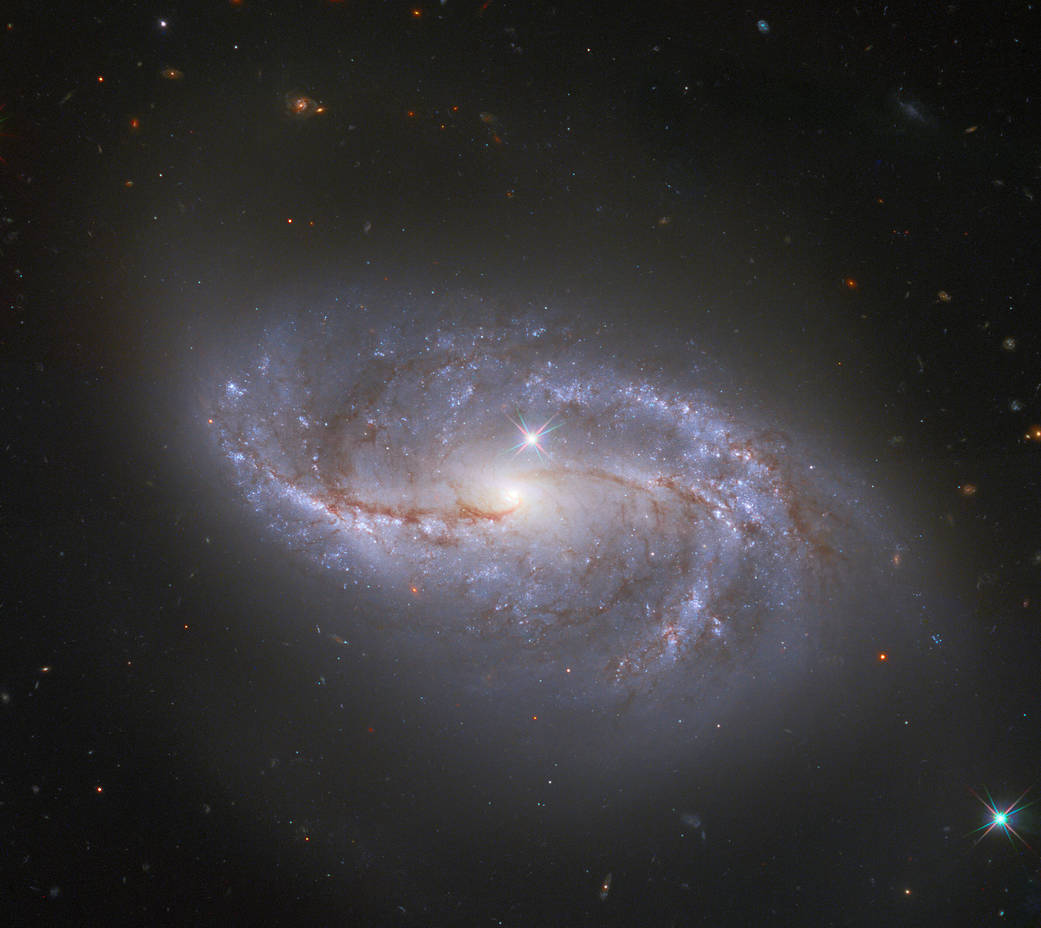As we learn more about the cosmos, it’s interesting how some of the greatest discoveries continue to happen close to home. This is expected to continue well into the future, where observations of Cosmic Dawn and distant galaxies will take place alongside surveys of the outer Solar System and our galaxy. In this latter respect, the ESA’s Gaia observatory will continue to play a vital role. As an astrometry mission, Gaia has been to determine the proper position and radial velocity of over a billion stars to create a three-dimensional map of the Milky Way.
Using data from Gaia’s third early Data Release (eDR3) and Legacy Survey data – from the Sloan Digital Sky Survey (SDSS) – an international team of astronomers created a new map of the Milky Way’s outer disk. In the process, they discovered evidence of structures in this region that include the remnants of fossil spiral arms. This discovery will shed new light on the formation and history of the Milky Way and may lead to a breakthrough in our understanding of galactic evolution.
The research was led by Chervin Laporte of the Institute of Cosmos Sciences of the University of Barcelona (ICCUB-IEEC) and the Kavli Institute for the Physics and Mathematics of the Universe at the University of Tokyo. He was joined by Sergey E Koposov and Vasily Belokurov, astronomers with the Royal Observatory at the University of Edinburgh (ROE) and the University of Cambridge (respectively). Their findings were described in a study that appeared in the Monthly Notices of the Royal Astronomical Society: Letters.

Using data from the Gaia mission released in December 2020, Laporte and his team identified coherent structures in the outer disk of the Milky Way to create a sharper map of the region. While this map provided sharper views of previously known structures, it also revealed the existence of previously-unknown spinning filamentary structures. On its face, this discovery was not so surprising since numerical simulations have predicted the existence of such filamentary structures already.
These are attributed to past interactions with satellite galaxies, which our galaxy has done plenty of in the past. Currently, there are 50 satellites surrounding our galaxy, like the Sagittarius dwarf galaxy that has been perturbing the Milky Way on and off for the past 5 or 6 billion years. However, the sheer quantity of substructures observed in these spinning filaments was unexpected and left Laporte and his colleagues mystified.
One possibility is that they are the remains of tidal arms from the Milky Way disk that were excited by various satellite galaxies at different times in the past. For example, before the Sagittarius dwarf galaxy, astronomers suspect that the Milky Way interacted with the Gaia Sausage – the remains of a dwarf galaxy that merged with the Milky Way about 8–11 billion years ago.
In a previous study, Laporte and his colleagues showed that one of the filamentary structures in the outer disk (the Anticenter Stream) contained stars that are mostly 8 billion years old or more. This meant they were too old to have been excited by Sagittarius alone and must have also experienced interaction with the Gaia Sausage. Another possibility is that some of these structures are not fossil spiral arms at all, but are the crest of large-scale vertical distortions in the Milky Way disk.

“We believe that discs respond to satellite impacts which set up vertical waves that propagate like ripples on a pond,” said Laporte in a recent RAS press release. To look into this further, the team has secured a dedicated follow-up program with the William Herschel Telescope on the island of Las Palmas. Using its optical and spectroscopic instruments, Laporte and his colleagues will attempt to study the properties of the stellar populations in each substructure.
Their efforts, and other surveys mounted in the near future, will help shed light on the nature and origin of these wispy structures, which will improve our understanding of how galaxies evolve through interaction and mergers. Said Laporte:
“Typically this region of the Milky Way has remained poorly explored due to the intervening dust which severely obscures most of the Galactic midplane. While dust affects the luminosity of a star, its motion remains unaffected. We were certainly very excited to see that the Gaia motions data helped us uncover these filamentary structures! Now the challenge remains to figure what these things exactly are, how they came to be, why in such large numbers, and what they can tell us about the Milky Way, its formation and evolution.”
Further Reading: Royal Astronomical Society, MNRAS

